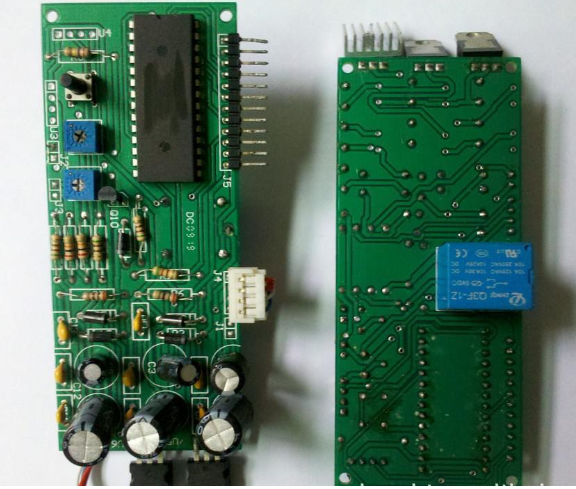Introduction to circuit board soldering
Circuit board, circuit board, PCB board, PCB soldering technology in recent years, the development of electronic industry process, you can notice an obvious trend is reflow soldering technology. In principle, traditional plug-in parts can also be reflow soldered, which is commonly referred to as through-hole reflow soldering. The advantage is that it is possible to complete all solder joints at the same time, which reduces the production cost. However, temperature-sensitive components limit the application of reflow soldering, whether it is an interposer or SMD. Then people turned their attention to the choice of welding. In most applications, selective soldering can be used after reflow soldering. This will be an economical and effective way to complete the remaining plug-in parts, and is fully compatible with future lead-free soldering
1. The solderability of the circuit board hole affects the welding quality
Poor solderability of the circuit board holes will result in false soldering defects, which will affect the parameters of the components in the circuit, resulting in unstable conduction of the multi-layer board components and inner wires, causing the entire circuit to fail. The so-called solderability is the property that the metal surface is wetted by molten solder, that is, a relatively uniform continuous smooth adhesion film is formed on the metal surface where the solder is located. The main factors affecting the solderability of printed circuit boards are:

(1) The composition of the solder and the nature of the solder. Solder is an important part of the welding chemical treatment process. It is composed of chemical materials containing flux. Commonly used low-melting eutectic metals are Sn-Pb or Sn-Pb-Ag. The impurity content must be controlled by a certain proportion to prevent the oxides generated by the impurities from being dissolved by the flux. The function of the flux is to help the solder wetting the surface of the circuit to be soldered by transferring heat and removing rust. White rosin and isopropanol solvents are generally used. (2) The welding temperature and the cleanliness of the metal plate surface will also affect the weldability. If the temperature is too high, the solder diffusion speed will increase. At this time, it will have high activity, which will quickly oxidize the circuit board and the molten surface of the solder, resulting in soldering defects. Contamination on the surface of the circuit board will also affect the solderability and cause defects. These defects include Tin beads, tin balls, open circuits, poor gloss, etc.
2. Welding defects caused by warpage
Circuit boards and components warp during the welding process, and defects such as virtual welding and short circuit due to stress deformation. Warpage is often caused by the temperature imbalance of the upper and lower parts of the circuit board. For large PCBs, warping will also occur due to the drop of the board's own weight. The ordinary PBGA device is about 0.5mm away from the printed circuit board. If the device on the circuit board is larger, the solder joint will be under stress for a long time as the circuit board cools down and the solder joint will be under stress. If the device is raised by 0.1mm, it will be enough to cause Weld open circuit.
3. The design of the circuit board affects the welding quality
In the layout, when the circuit board size is too large, although the soldering is easier to control, the printed lines are long, the impedance increases, the anti-noise ability is reduced, and the cost increases; Mutual interference, such as electromagnetic interference of circuit boards. Therefore, the PCB board design must be optimized: (1) Shorten the wiring between high-frequency components and reduce EMI interference. (2) Components with heavy weight (such as more than 20g) should be fixed with brackets and then welded. (3) Heat dissipation issues should be considered for heating components to prevent defects and rework caused by large ΔT on the surface of the components, and the thermal components should be far away from the heating source. (4) The arrangement of the components is as parallel as possible, which is not only beautiful but also easy to weld, and is suitable for mass production. The circuit board is designed as a 4:3 rectangle. Do not change the wire width to avoid wiring discontinuities. When the circuit board is heated for a long time, the copper foil is easy to expand and fall off. Therefore, avoid using large-area copper foil.